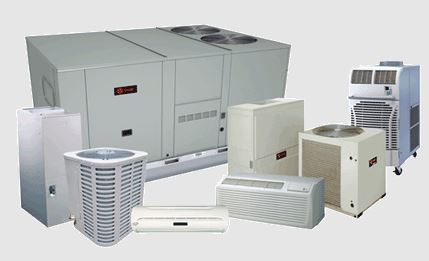The Case of The HVAC
In an interview last November with Palette, Ms. Helen Haney, AJA CFO, predicted that issues with the High School HVAC system would be resolved “within the next two weeks.” Now a year later, with temperatures reaching above 80 degrees in parts of the 400s Hallway, it has become clear that these issues require more time than predicted. Throughout the past year, AJA’s facility team engaged in a constant push-and-pull battle with the High School’s HVAC unit as they worked to repair it, in Ms. Haney’s words, “once and for all.”
Although the timeline for repairing the HVAC has lasted longer than expected, Ms. Haney’s understanding of the faults with the system remain consistent. Just as she explained last year, Ms. Haney still believes that miscommunication between a large HVAC unit that rests on the roof of the 400s hallway and thermostats downstairs causes the overarching issue. The thermostats report an inaccurate temperature to the unit, and it heats or cools the hallway when it should not. Additionally, the people who constructed the High School installed the duct work running throughout the 400s improperly, so the air blown down the hallway does not optimally flow into some classrooms. Considering both of these issues, the facilities team last year looked into upgrading the HVAC unit above the hallway and potentially redoing parts of the duct work.
This process, however, took longer than expected. Although now part of the High School, the unit above the 400s hallways actually belonged to the older part of the AJA campus prior to the addition of the High School wing, making it approximately 30 years old. According to Ms. Haney, the parts needed to repair the system are “no longer existent,” so the HVAC unit requires an “upgrade… to a whole new system.” Supply chain shortages caused by COVID-19, however, extended the timeframe for this project.
While waiting for the pieces of this new unit to arrive, teachers in the 400s hallway felt the effects of the issues with the HVAC unit. For instance, math teacher Mr. Bill Feinberg reported that his classroom “unfortunately got to an incredibly uncomfortable 82 degrees.” He recalled, “I was ready to pass out.” Dean of Students and Hebrew Teacher Moreh Danny Nurafshan agreed, stating that the “scorching heat” in his room earlier in the year “was not conducive to learning.” To combat the heat, Moreh Danny attempted to take his classes outside, but he struggled to maintain the classroom decorum in an informal outdoor setting.
Throughout the past year, several teachers, including Mr. Feinberg, submitted tickets regarding the high temperatures in the 400s hallway. However, Ms. Haney explained that because the facilities team already understands the complex issues with the HVAC system, “there’s not that much that we [can] do other than fix things on the ground.” Ms. Haney and the AJA facilities team conducted several walk-throughs down the hallway to assess the need for fans and portable units and respond accordingly. Ms. Haney purchased three stand-up fans for each classroom along the hallway and installed “portable air conditioning units for a couple of the classrooms that tended to get more hot than others.” Yet, for Mr. Feinberg, “two big fans… in both corners of the room” still proved unsuccessful at combating the heat because “all it really did was blow hot air around the room.”
In contrast to the warm temperatures of the 400s hallway, the chemistry and biology labs upstairs reach cooler temperatures. Ms. Haney acknowledged feedback she heard from students who shifted between “really, really freezing” temperatures upstairs to “really, really hot” classrooms across the 400s hallway.
Although most of the classrooms upstairs drop to cold temperatures, Mrs. Hana Hecht’s Room 525 experiences warm temperatures, as it did last year. Mrs. Hecht attested that her room frequently climbs to “77 degrees, and when the heat kicks on, well, it kicks on.” She lamented, “I’m dying… it’s very hard to teach in such heat.” Contrastingly, Room 524 next door, where Dr. Corrie Stephenson and Mrs. Catherine Brand teach, drops to cool temperatures. For instance, one morning, Dr. Stephenson recounted that the room reached 49 degrees. “I don’t complain when it’s between 60 and 70,” she reasoned, “but 49’s a bit too cold.”
Noting complaints from students and teachers regarding the science labs, Ms. Haney clarified that the thermostat controls for these rooms reside in the HS Business office, so “if the teachers are ever too cool or thermostats need to be adjusted in any way, the teachers just need to email our Director of Facilities Mr. Steven Anderson or put in a maintenance request.” However, Dr. Stephenson and Mrs. Brand posited that adjusting the thermostat is not enough to adjust the temperatures in their classroom. Mrs. Brand explained that even when the facilities team sets the temperature higher in her classroom, it does not reach the set threshold in reality. The opposite effect occurs in Mrs. Hecht’s room. Dr. Stephenson recalled one occasion when “the heat was still blasting” past 76 degrees in Mrs. Hecht’s room “even though her temperature was set to 69.”
“….the reason for temperature fluctuations upstairs remains a mystery…”
Dr. Stephenson believes this phenomenon results from the thermostats measuring the temperatures in Rooms 524 and 525 incorrectly. Although last year Dr. Stephenson was “not entirely sure [of] what [was] causing the problem,” she and Mrs. Brand have since understood from HVAC companies that have worked on the High School’s system that “the sensor in Mrs. Hecht’s room that talks to the thermostat downstairs is too close” to their own room, 524. This causes “the heat in [Mrs. Hecht’s] room to kick on and overheat” due to reading the temperature from the cooler room next door. Mrs. Brand has taught in Room 524 since its addition to the High School building and heard from HVAC companies that the system’s faults trace back to the construction of the High School wing in that “the sensors weren’t where they were supposed to be according to the building plans.” However, the incorrect placement of the sensors remains a theory; according to Mrs. Brand, “the long and the short of it is that we don’t actually know what causes it, [but] I strongly suspect that mistakes were made with the initial installation of the HVAC system in the new construction, [and they] have just pervaded.”
While the reason for temperature fluctuations upstairs remains a mystery, Ms. Haney expressed prospects of resolving the problem in the 400s hallway downstairs. She explained that AJA worked with an HVAC company to place an order for the parts to replace the unit above the 400s hallway. Around Thanksgiving, Ms. Haney predicts that the final parts of the unit will arrive after extended delays, and the HVAC company will finally install the unit on the roof with a crane, work to repair the duct work, and upgrade the HVAC system throughout the hallway as needed.
Although the issues with the HVAC have persisted months into the school year, the installation of a new unit in the 400s hallway might mean the end of a long battle with the hallway’s HVAC system. In the science labs upstairs, however, the fluctuations in temperature remain a mystery that has yet to be solved.
AJA By The Numbers
The following article contains various room temperatures throughout the AJA High School. Temperatures were recorded in Fahrenheit with a thermometer under as controlled conditions as possible over the course of one week.
Walking through the AJA High School, one could easily envision some camels strolling down the 400s hallway. They may imagine the sun beaming down or the tiled floors turning to sand underneath their feet. As the end of the hall approaches, one would not be surprised to feel a sudden breeze while witnessing a waddle of penguins sliding across the snow-white dry-erase boards of the Beit Midrash. Going up the stairs, one might expect to find polar bears experimenting with solutions in the bio lab or the kangaroos and cacti sprouting in the physics lab.
Although there may not be camels, penguins, or polar bears in the AJA High School building, the room temperatures do fluctuate significantly. Throughout the day, temperatures in various rooms range within 13 degrees. Freshman Talia Sarnat reported that she struggles with the “transition” in temperatures. Talia mentioned that she finds it difficult to balance between “trying to dress based on the temperature outside but also [based] on the temperature in the school.”
In the 400s hallway, afternoon temperatures average at 75.7 degrees, with a range from 72 degrees to 77.6 degrees. For Hebrew teacher Ronit Ben-Amotz, this difference in temperature makes a huge impact on her comfort in her classroom. Although Morah Ronit prefers warmer temperatures, once her room reaches above 74 degrees, “it’s too hot… I can’t function.”
Ms. Helen Haney, Chief Financial Officer, explained that the warmer temperatures in the 400s hallway are in part due to the improper structure of the ductwork above the hall. She added that the builders of the new addition of the High School “thought that the systems that they have in place would work,” but, “it’s not really done properly.” The improper airflow is worst for Judaic studies teacher Rabbi Raif Melhado, whose classroom is located at the very end of the 400s hallway. With afternoon temperatures reaching 77.4 degrees, Rabbi Melhado’s room has the highest average temperature of the hallway, and he expressed that his room was “too hot” 87.5% of the time in a daily form sent out to teachers. He added that he only ranked the temperatures as “just right” in the mornings due to cooler outside temperatures. Despite the warm temperatures, Rabbi Melhado appreciated Head of High School Dr. Sim Pearl’s “conscientious” response to the heat by working on installing a portable AC unit in his room. “I absolutely am compassionate and empathetic about this, and I feel horrible for the teachers,” emphasized Dr. Pearl. He explained that he has tried his best to “track down fans… [but] it’s not enough.”
In the Beit Midrash and student commons area, where Judaics teacher Morah Galia Magen works, temperatures reach significantly lower numbers than that of the 400s hallway, with an average temperature of about 67.6 degrees. Morah Galia recalled that “there were a couple of days that I just didn’t feel good during school because I was too cold.” Although she “tries to bring a jacket all the time,” she forgets from time to time. Mr. David Byron, a teacher in the 400s hallway who expressed his classroom as being “hot” 75% of the afternoons recorded, agreed, noting that although he didn’t need a sweatshirt in his classroom during the afternoon, “it was definitely much colder in the commons.”
Although the temperatures downstairs demonstrate relative consistencies in their cold or hot temperatures, the classrooms upstairs vary significantly. Mrs. Hana Hecht’s room reached temperatures of up to 78.1 degrees, while next door in the bio lab, cooler temperatures ranged throughout the 60s. Dr. Corrie Stephenson, who teaches in the bio lab, attributed these temperatures to “the sensors in our rooms [that] are not reading and reporting back to the thermostats” downstairs. Although Mrs. Hecht’s room is extremely hot, “the thermostats are showing that it’s much colder than it actually is.” In fact, Danit Kutner, a freshman who has a class in Mrs. Hecht’s room, recalled a day when the room was noticeably hotter and the class had to move outside. Sophomore Yael Mainzer agreed, adding that the warmer classrooms “make it very difficult to focus on my learning.”
Overall, Ms. Haney described the air conditioning issues as “multifold, [and] it has lots of little pieces.” Currently, the school is in the process of looking into quotes to repair the HVAC and get a better understanding of what is wrong. Ms. Haney explained that there is a big HVAC unit above the 400s hallway, but “the components in that hallway actually are not talking properly to that unit upstairs.” Fixing the HVAC system might involve upgrading the unit upstairs and reworking the duct system throughout the hallway.
Reflecting on the dilemmas involved with repairing the HVAC, Dr. Pearl felt that “a kind of perfect storm happened.” The owner of the HVAC company had contracted COVID-19 which slowed the repair progress. Furthermore, Ms. Haney states that the HVAC companies report that they fixed the temperature issues, when in reality they remain. Therefore, her goal at the moment is “really understanding the issue more ourselves” in order to fix the problem “once and for all.” Dr. Pearl concluded, “The teachers have been absolutely wonderful in putting up with us, and God willing… this will be fixed in a permanent way.” Already, the situation in warmer classrooms has seen improvement as winter approaches. Despite this, Dr. Pearl feels determined to resolve this issue: “It won’t be as much of an issue [in the winter], but it has got to be taken care of.”
These stories received First Place in the 2023 Jewish Scholastic Journalism Awards for “Ongoing Reporting” Judges said “A student journalist holds the administration accountable in the factor of a malfunctioning school heating and cooling system. ”












